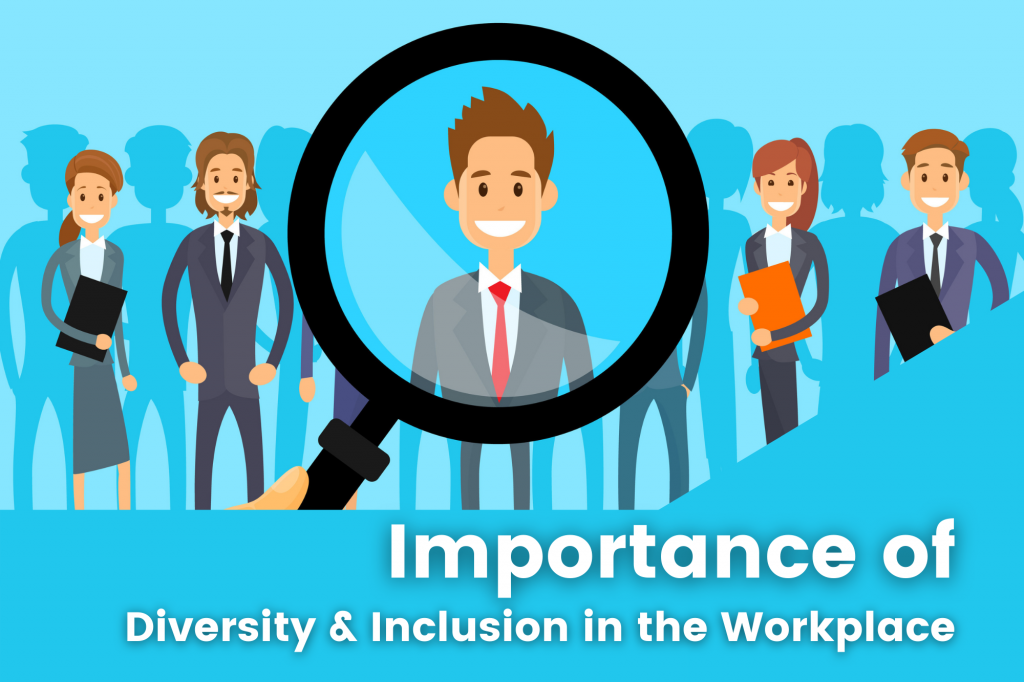Diversity and inclusion (D&I) in the workplace are critical components for fostering a healthy, productive, and innovative business environment. Here’s an in-depth exploration of why D&I are essential and how they can be effectively implemented:
Importance of Diversity and Inclusion
1. Enhanced Innovation and Creativity
- Diverse Perspectives: A diverse workforce brings together individuals with different backgrounds, experiences, and viewpoints. This variety of perspectives can lead to more creative solutions and innovative ideas.
- Problem-Solving: Diverse teams are better equipped to tackle complex problems because they can approach issues from multiple angles.
2. Improved Employee Performance and Engagement
- Sense of Belonging: Inclusion ensures that all employees feel valued and respected, which can boost morale and motivation.
- Increased Engagement: Employees who feel included and recognized are more likely to be engaged and committed to their work, leading to higher productivity and lower turnover rates.
3. Broader Talent Pool
- Attracting Talent: Companies known for their commitment to D&I are more attractive to a broader range of candidates, including top talent from diverse backgrounds.
- Retention: A positive, inclusive work environment helps retain employees by providing a supportive and respectful workplace culture.
4. Better Decision-Making
- Diverse Insights: Teams that include diverse members can make better decisions by considering a wider array of information and perspectives.
- Reduced Groupthink: Inclusion helps prevent groupthink by encouraging diverse opinions and critical thinking, leading to more balanced and effective decision-making.
5. Market Competitiveness
- Understanding Markets: A diverse workforce can better understand and cater to diverse customer bases, leading to improved customer satisfaction and market reach.
- Reputation: Companies that prioritize D&I often enjoy a better reputation, which can lead to increased customer loyalty and brand strength.
Implementing Diversity and Inclusion
1. Leadership Commitment
- Top-Down Approach: Leadership must demonstrate a genuine commitment to D&I through policies, actions, and communication.
- Role Models: Leaders should act as role models by embracing and promoting D&I within their teams and throughout the organization.
2. Inclusive Policies and Practices
- Recruitment: Implement unbiased recruitment processes that ensure equal opportunities for all candidates, such as blind resume reviews and diverse hiring panels.
- Promotion and Development: Ensure that all employees have equal access to career development opportunities, mentorship programs, and promotions.
3. Training and Education
- D&I Training: Provide regular training sessions on D&I topics, including unconscious bias, cultural competence, and inclusive leadership.
- Ongoing Education: Encourage continuous learning and awareness about D&I issues through workshops, seminars, and resources.
4. Inclusive Culture
- Employee Resource Groups (ERGs): Support the creation of ERGs that provide a platform for underrepresented groups to share experiences and advocate for their needs.
- Open Communication: Foster an environment where employees feel safe to voice their concerns and suggestions regarding D&I.
5. Measurement and Accountability
- Track Progress: Use metrics and analytics to track the progress of D&I initiatives, including diversity demographics, employee satisfaction, and retention rates.
- Accountability: Hold leaders and managers accountable for meeting D&I goals and integrating inclusive practices into their teams.
6. External Partnerships
- Community Engagement: Engage with diverse communities and organizations to build strong relationships and support broader D&I efforts.
- Supplier Diversity: Implement programs to ensure that the company’s suppliers and partners are diverse and inclusive.
Case Studies and Examples
1. Tech Industry
- Google: Google has implemented comprehensive D&I strategies, including unconscious bias training, employee resource groups, and partnerships with organizations that support underrepresented groups in tech.
- Microsoft: Microsoft’s commitment to D&I includes robust employee training programs, a focus on inclusive product development, and regular reporting on diversity metrics.
2. Finance Sector
- JP Morgan Chase: JP Morgan Chase has established clear D&I goals, including increasing representation of women and minorities in leadership roles and creating a culture of inclusion through extensive training and resource groups.
3. Healthcare
- Kaiser Permanente: This healthcare provider has a strong focus on D&I, with initiatives such as diverse hiring practices, inclusive patient care, and community outreach programs.
Tags
Actionable Tips
